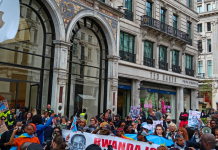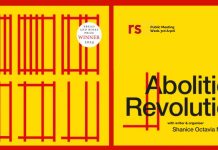Want to reform finance but maintain capitalism? Then you may have a problem. Tom Haines-Doran reviews ‘The City’ by Tony Norfield, recently published by Verso.

Do you want to understand the City and how finance works in the British economy? Just ask an ex-banker. Better still, ask an ex-banker who not only spent decades working in the dealing rooms of London’s financial district, but who is also a Marxist economist. For this you need Tony Norfield, whose book The City, based on his PhD research at SOAS, has just come out in hardback.
It has become fashionable amongst much of the left to take aim at both ‘finance’ and ‘financialisation’, particularly in the wake of the global crisis. This is somewhat understandable given the massive shift of wealth to the rich represented by the bank bailouts and ‘quantitative easing’, and in the academic world it has sometimes provided a fresh angle on increasingly turgid debates over the nature of neoliberalism. But all too often these arguments take on a reformist hue, suggesting that if only we could moderate the excesses of the financial sector then the type of collapse that the banking system went through in 2008, and the social disaster known as ‘austerity’ that followed, could in future be averted, leaving a nicer and crisis-free form of capitalism. Accompanying these analyses have been feeble attempts by international institutions and national governments to introduce financial regulation.
With great skill, Norfield demonstrates that the financial sector is unreformable. It is unreformable firstly for the more obvious reason that finance operates globally, with low levels of fixed capital. This allows financial institutions the ability to move between jurisdictions relatively easily, thus avoiding punitive measures. But, more fundamentally, finance is unreformable because it is an essential feature of capitalism. Rather than being necessarily a drag on the productive side of the economy, it facilitates production through its coordination of investment and its ability to distribute surpluses. Industrial capitalists cannot do without this, because they must focus largely on the task of exploiting labour and producing commodities. If you want rid of financial excess then you must be prepared to destroy the capitalist system as a whole, because capitalism cannot work without finance, and finance will always tend towards excess.
Another mistake by some on the left is to imagine that the the United States has an overwhelming monopoly of global financial power. While the US does indeed possess incredible power, it must share this dominance with a handful of other countries, particularly the UK. This means that while US and UK interests are frequently aligned, the UK has its own objectives that are not necessarily determined by Washington. It also means that British imperialism is far from dead. Because it is the world’s largest international banking and foreign exchange market, the City is able to wield considerable power over the global economy. Clearly, British imperialism is different in nature compared to its days of colonial dominance. However, the empire was always as much a system of financial appropriation as one of conquest and plunder. Norfield argues that the institutional structure and expertise built up in the City (as well as other factors) meant that by the 1960s it was well placed to become the central processing hub for transactions priced in US dollars, away from the reach of the relatively tough US regulatory authorities.
Norfield scatters his own personal experiences in working in the City throughout the book. However, anyone hoping for a Wolf of Wall Street-style exposé of corporate debauchery will be disappointed. Instead, they will find a serious analysis of the main functions of the City, and how they unite various processes integral to global capital accumulation. According to various indices, the City is one of the most, and sometimes the most, important financial centres in the world, being a ‘key intermediary for international flows of money and securities [that] keeps the global financial system ticking over’. Norfield shows how City financial institutions create a form of fictitious capital known as ‘securities’, which appear to break a link in the economy between the creation of real value in production and the amount of money at the disposal of capitalists. However, it is better to think of this link as being stretched, because this kind of credit creation allows for immediate investment, even if the returns on the investment are merely expected at some point in the future, rather than guaranteed. The winners are those with existing wealth and power, since they are able to access securities more cheaply, and can therefore upgrade and expand ahead of their rivals. This drives monopolisation effects in the productive sector of the economy, as a handful of multinational corporations have come to dominate the manufacture of key commodities.
As Norfield argues, all of this has profound implications for the British economy. The financial activities of the City have gone a significant way towards offsetting the decline in British manufacturing in recent decades, which has lead to a chronic trade deficit. The economy has become increasingly reliant on surplus value produced globally, as City financial institutions are positioned to to take a slice of these profits in service fees and interest charges. This also explains why successive governments have consistently produced policies that have backed the financial sector.
Norfield notes that millions of people in Britain own and benefit from bonds and equities, to the extent that ‘a quarter of the population is broke, half has little and the remainder is doing OK, or very well’ as a result. While this synopsis excludes mortgage liabilities, it also excludes investments in the form of pensions and wealth accumulation resulting from property ownership. As Norfield argues, this is a useful reality check for the simplified 99% v. 1% analysis popularised by Occupy. The implication is that some of those 99% will have a material interest in voting for the right, perhaps even to the extent that it might decide elections.
This echoes Lenin’s argument that there exists in Britain a class of ‘labour aristocracy’ – a significant section of the working class bought out by the proceeds of British imperialism. While I think there is some truth in this argument, I also think that Norfield overstates it somewhat. For one thing, material circumstances do not translate automatically into political ideology (and Norfield himself is probably one of the best exemplars of this!). Furthermore, as Charlie Post argues, it is the very nature of ‘capitalist social property relations that make possible… working class conscious behaviour and action‘. When I worked in a multinational bank’s call centre, I had much more in common with my colleagues who took up small share options, which I flat-out refused to, than I did with the bank’s multimillionaire executives. While I never did quite manage to launch a shop floor insurrection, the potential, I believe, was always there. It is also questionable how useful it is to treat the top quartile of financial investors as a single group, when there is such a difference in wealth between individuals at the bottom end of this category and that of the super rich top 0.01%, whose fortunes have blossomed since the onset of the crisis.
This reservation aside, The City will prove an invaluable book for anyone wishing to better understand the world of finance, how the City operates and how this relates to the broader capitalist system. It combines a Marxist reading of the workings of finance with real-world examples, and with well-argued amendments and additions to Marx’s theory where necessary. This is also one of the few books I have read that manages to explain the significance of commonly-used, but mystifying, economic terms (e.g. ‘derivative’, ‘collateralised debt obligation’, ‘Euromarkets’) and how these financial processes and instruments function in the real world. One idea for a potential second edition would be to include a glossary of terms, so you don’t need to go back find the definitions of complex concepts in the text itself when you need a little reminder. Since this thoroughly readable and illuminating book should have significant reach and application, I expect this potential to be realised.
The City is available directly through the Verso website for £16.00. Follow Tony’s blog at http://economicsofimperialism.blogspot.co.uk/



















[…] You can find my review of Tony Norfield’s book The City here on the RS21 website. […]